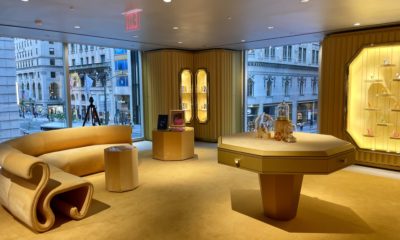In the late 1990s, we were promised “the new economy.”
* The economy would grow faster than it ever had, and would grow forever.
* The Internet would transform everything.
* We'd never have another recession again.
Well, “the new economy” is dead. It turns out that none of that was true. All we really had was excessive investment in technology. Everyone was scared of Y2K and investing furiously in information technology, especially technology related to the Internet.
Advertisement
Then Y2K passed without any problems, interest rates and oil prices started to rise, the technology bubble collapsed, investment stopped and we went into a recession.
More recently, scandals have created uncertainty over the reliability of corporate profit information, stock prices have declined, productivity stopped growing and now fear of war with Iraq is dampening spending and stock prices.
The drop in market capitalization of American companies as a share of Gross Domestic Product (GDP) is as low as the drop that took place in 1929. This has had a big impact on consumers, who've stopped spending – particularly at the middle- to upper-income levels.
Retailers that carve out a clear niche are still thriving, despite the current tough economic climate. Chico's, for example, has succeeded by targeting women baby boomers.
There won't be much spending growth in the next couple of months. We could go into another recession, and even if we don't, we're looking at fairly slow growth over the next two or three years. Consumers are up to their elbows in debt; debt-service payments as a share of consumer income are close to historic highs. And so it looks like a slow-growth environment and a slow-growth consumer.
Baby boomers are getting older, tend to save more and spend less as they near retirement, and to spend less on goods and more on services. Subsequent generations are smaller and more fickle.
Advertisement
There are few successful stores at the mall, other than those who've carved out a clear niche (such as Chico's, which has done such a good job of marketing to boomers). Everyone else is marketing to teens, and there simply aren't enough of them.
Lower interest rates led to a binge of refinancing, which gave consumers more money to spend, which they spent on home-related products like consumer electronics, furniture and home-improvement products.
Wal-Mart has annual sales of $200 billion. It's the largest seller of apparel, with $35 billion in 2002. (J.C. Penney was second with $22 billion.) True, that's mostly socks and underwear, not fashion, but Wal-Mart intends to change that. It announced that it's rolling out the George label from the U.K., a national private label for fashion apparel. It's also going to roll out 1000 new supercenters in the next five years, doubling the amount of apparel, food and all the other items it sells. That will create real problems for mall-based retailers, supermarkets, toy retailers, just about everybody.
In nearly every retail category, there's more consolidation and more effort by large retailers to try differentiating themselves from Wal-Mart, not just on the basis of price but on the basis of merchandising, customer service, private labels.
Big European retailers will invest in the U.S. market, through acquisition – Carreffours, Metro, Royal Ahold, Tesco. The value of the dollar is likely to decline, making U.S. assets cheaper for Europeans to purchase. Kmart is a target for acquisition – even Target.
Ira Kalish is senior vp and chief economist of Retail Forward Inc. in Santa Monica, Calif. These are excerpts from his presentation at VM+ SD's International Retail Design Conference in September in Pasadena, Calif. To purchase an audiocassette of the session, e-mail mark.kissling@stmediagroup.com.
Advertisement

 Headlines2 weeks ago
Headlines2 weeks ago
 Headlines2 weeks ago
Headlines2 weeks ago
 Headlines2 weeks ago
Headlines2 weeks ago
 Headlines6 days ago
Headlines6 days ago
 Eric Feigenbaum5 days ago
Eric Feigenbaum5 days ago
 Headlines1 week ago
Headlines1 week ago
 Designer Dozen1 week ago
Designer Dozen1 week ago














